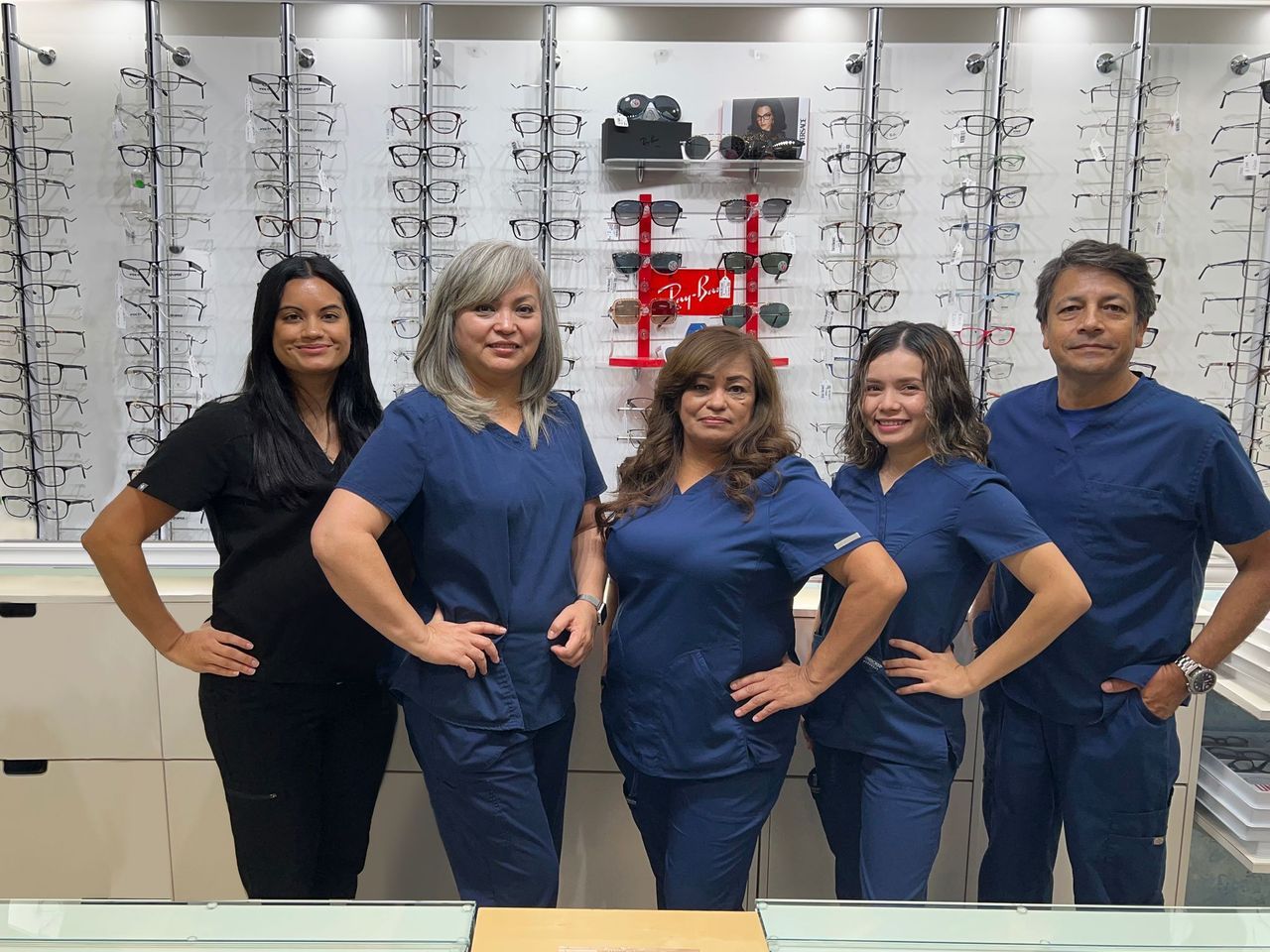Correcting
Lazy Eye expertly
in Houston

Lazy eye, or amblyopia, is...
The loss or lack of development of central vision in one eye that is unrelated to any eye health problem and is not correctable with lenses. It can occur when a person does not use both eyes together.
Lazy eye often occurs in people who have crossed eyes (misalignment) or a large difference in the degree of nearsightedness or farsightedness between the two eyes. It usually develops before age 6, and it does not affect side (peripheral) vision.
Symptoms may include noticeably favoring one eye or a tendency to bump into objects on one side. Symptoms are not always obvious.
Treatment for lazy eye may include a combination of prescription lenses, prisms, vision therapy and eye patching. In vision therapy, patients learn how to use the two eyes together, which helps prevent lazy eye from reoccurring.
Early diagnosis increases the chance for a complete recovery. This is one reason the American Optometric Association recommends that children have a comprehensive optometric examination by 6 months of age and again at age 3.
Lazy eye will not go away on its own. If not diagnosed until the preteen, teen or adult years, treatment takes longer and is often less effective.
Amblyopia FAQs
- What is amblyopia?
- Who is likely to develop amblyopia?
- What causes amblyopia?
- How does amblyopia affect vision?
- Is the amblyopic eye blind?
- What are the signs/symptoms of amblyopia?
- How is amblyopia diagnosed?
- How is amblyopia treated?
- Does amblyopia get worse?
- Is amblyopia preventable?
- How great a handicap is amblyopia?
-
What is amblyopia?
Amblyopia (lazy eye) is the decrease of vision in one or both eyes due to abnormal vision development during childhood. The vision process involves both the eyes and the brain. Amblyopia is the failure of the vision-sensing portions of the brain to develop normally, which results in blurry vision. It is one of the leading causes of vision loss in children.
-
Who is likely to develop amblyopia?
Amblyopia is generally the result of poor early visual development. It usually occurs before the age of 8. Infants born prematurely or with low birth weight are at a greater risk for developing the condition.
An estimated 2 to 4 percent of children have amblyopia. The chance of amblyopia developing during adulthood is very small.
-
What causes amblyopia?
Amblyopia usually results from a failure to use both eyes together. It can be caused by the presence of crossed eyes (strabismus), unequal farsightedness or nearsightedness (refractive error), or a physical obstruction of vision like cataracts.
If there is a large enough difference in the degree of nearsightedness, farsightedness or astigmatism between the two eyes, or if the eyes are crossed, the brain learns to ignore one eye in favor of the other.
-
How does amblyopia affect vision?
Normally, the images each eye sends to the brain are identical. When they differ too much, the brain learns to ignore the poor image sent by one eye and "sees" only with the good eye.
LThe vision of the eye that is ignored becomes weaker from lack of use.
-
Is the amblyopic eye blind?
The amblyopic eye is not blind in the sense that it is entirely without sight.
Amblyopia affects only the central vision of the affected eye. Peripheral (side) awareness will remain the same.
-
What are the signs/symptoms of amblyopia?
Amblyopia usually has few symptoms. People with amblyopia may also have crossed eyes or a large difference in the refractive error between their two eyes. A child with amblyopia may noticeably favor one eye and have a tendency to bump into objects on one side.
-
How is amblyopia diagnosed?
A comprehensive eye examination can determine the presence of amblyopia. The earlier it is diagnosed, the greater the chance for a successful treatment.
When amblyopia occurs only in one eye, the good eye takes over and the individual is generally unaware of the condition. That is why it is important to have your child's vision examined at about six months, at age three and again before he or she enters school.
-
How is amblyopia treated?
Corrective lenses, contact lenses, prisms, occluders and vision therapy are often used to treat amblyopia.
Corrective lenses, contact lenses, prisms, occluders and vision therapy are often used to treat amblyopia.
-
Does amblyopia get worse?
Vision in the amblyopic eye may continue to decrease if left untreated. The brain simply pays less and less attention to the images sent by the amblyopic eye. Eventually, the condition stabilizes, and the eye is virtually unused. It is very difficult to effectively treat amblyopia at this point.
-
Is amblyopia preventable?
Early detection and treatment of amblyopia and significantly unequal refractive errors can reduce the chances of one eye becoming amblyopic.
-
How great a handicap is amblyopia?
Amblyopia can limit the occupational and leisure activities you can do. Activities requiring good depth perception may be difficult or impossible to perform. In addition, if your good eye becomes injured or develops vision problems, you may have difficulty maintaining your normal activities.



